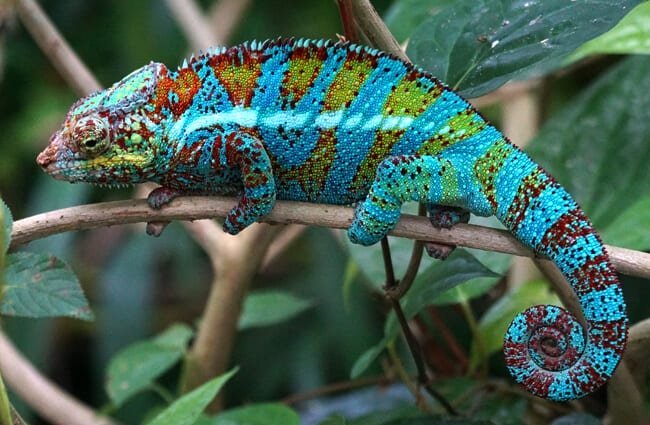Suggested Meta Description
Panther chameleons are colorful reptiles local to Madagascar. These reptiles are famous extraordinary pets since they are one of the most colorful chameleon species. In this blog, you will know a few facts about Panther Chameleon.
Targeted Keyword – Panther Chameleon
Body
The panther chameleon is a species of chameleon local to Madagascar. These colorful reptiles are extremely famous in the pet category. Their coloration changes with the area and the distinctive color examples of these chameleons are normally referred to as ‘regions’, which are named after the topographical area where they are found. Panther chameleons can be vibrant red, blue, green, or orange. Various other color stages and examples happen between and within locales. Females by and large stay tan and brown colored with touches of pink, peach, or deep orange, regardless of where they are found, yet there are slight contrasts in examples and colors among the distinctive color stages. Males in this species are bigger and more dynamically colored than females.
- Habits and Lifestyle
Panther chameleons are singular and extremely regional. They spend most of their life in confinement, aside from the mating season. At the point when two males come into contact, they will change color and blow up their bodies, endeavoring to assert their predominance. Regularly these fights end at this stage, with the failure retreating, turning dark and drab colors. At times, the presentations bring about physical battle if neither one of the contenders calls it quits. Panther chameleons are generally dynamic during the day and go through their days foraging in the trees, looking for insects. Panther chameleons have long tongues which they are prepared to do quickly reaching out of the mouth. The tongue stretches out at around 26 body lengths for each second and hits the prey in about 0.0030 sec. At the tip of this flexible tongue, a strong, club-like structure covered in thick mucus structures a suction cup. When the tip sticks to a prey thing, it is moved rapidly once again into the mouth, where the panther chameleon’s solid jaws pulverize it and it is consumed.
- Distribution of the Panther Chameleon
These chameleons have an extremely limited natural habitat ranges. They are endemic just to the island of Madagascar, and inside the island, they are found distinctly along the northern coasts — specifically at the northern tip of Madagascar, and along the upper east coast. Outside of Madagascar search for them in families worldwide as pets, and as obtrusive species in Reunion and Mauritius.
- Diet of the Panther Chameleon
Panther chameleons are insectivores, which implies that their diet comprises fundamentally of insects. They have an incredibly exact vision and utilize that vision to spot little insects from distances to the extent 30 ft. away. These animals utilize their unbelievably long tongues like slingshots. The tongue includes a suction cup and a layer of mucous on the tip, which successfully catches insects and takes them back to the reptile’s mouth.
- Panther Chameleon and Human Interaction
These reptiles are normal exotic pets, especially lovable for their brilliant colors. This species replicates effectively in human consideration, and this ensures the wild population. This implies there is no compelling reason to catch them from the wild for the pet trade, guaranteeing the wild chameleons have a steady populace. As indicated by the IUCN Red List, this species is in any event Concern.
- Domestication
This species repeats effectively in bondage, yet they have not been domesticated at all. Particular breeding has not happened on a huge enough scale to accomplish domestication.
- Reproduction of the Panther Chameleon
These chameleons can breed when they arrive at seven months old enough. Females who are conveying eggs will flag their reluctance to mate by turning a dark color, usually with orange stripes. She will lay somewhere in the range of five to eight grips of eggs, however, typically doesn’t endure longer than two years after replicating. She can lay a few dozen eggs in a single grasp, and it can control more than seven months for those eggs to hatch.
The most significant part of keeping these chameleons is giving vertical space in their surrounded area. They are arboreal and require bunches of climbing space. Giving a wide assortment of branches, plants, and foliage is significant.
They require maintenance of temperature, light, and moistness dependent on the breeder of your reproducer or veterinarian. Use variety in their taking care of, as and they can eat various insects.

